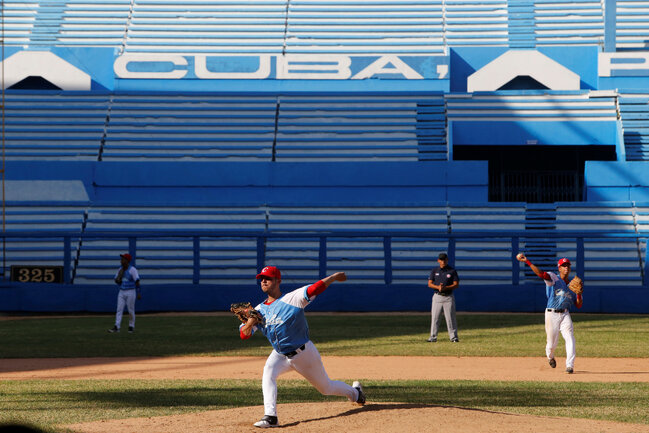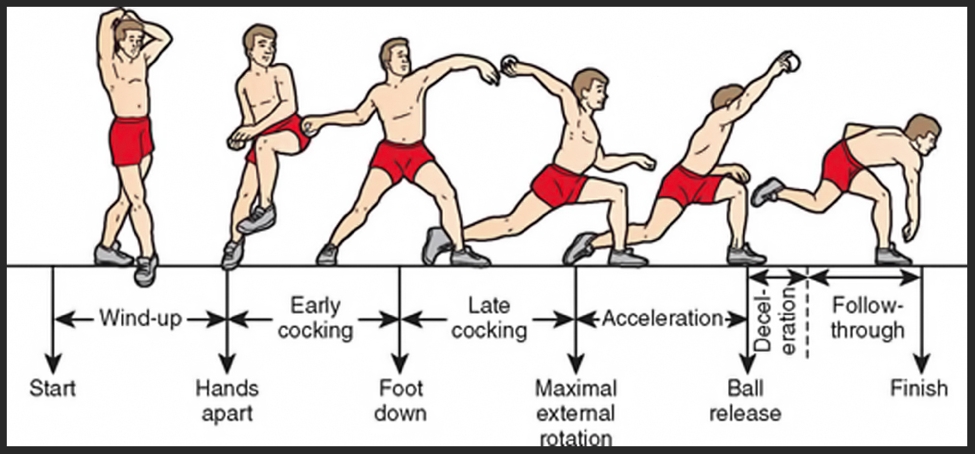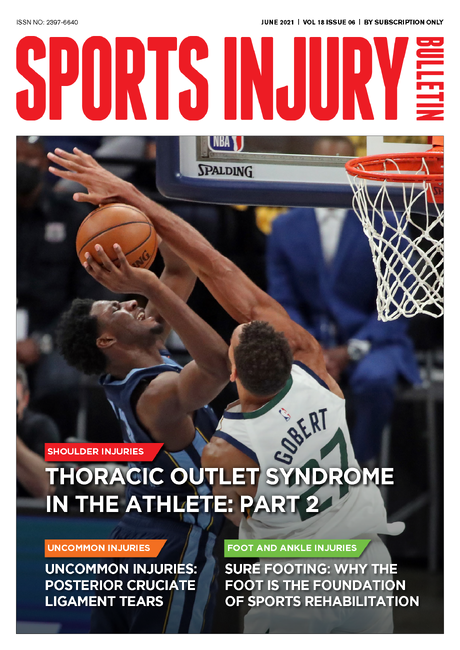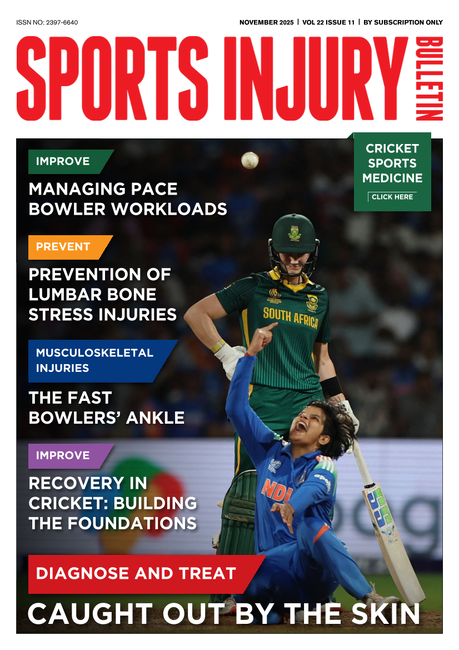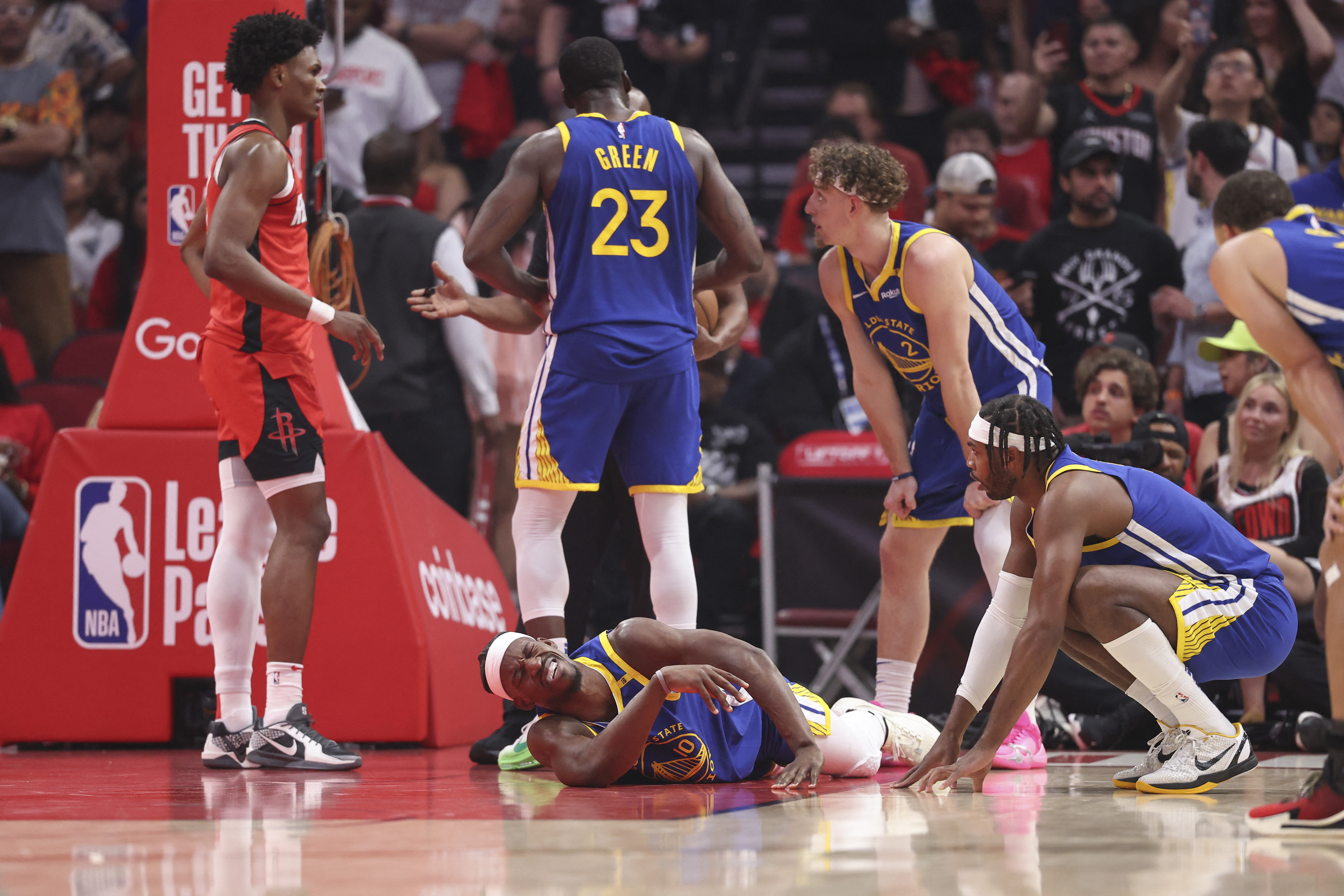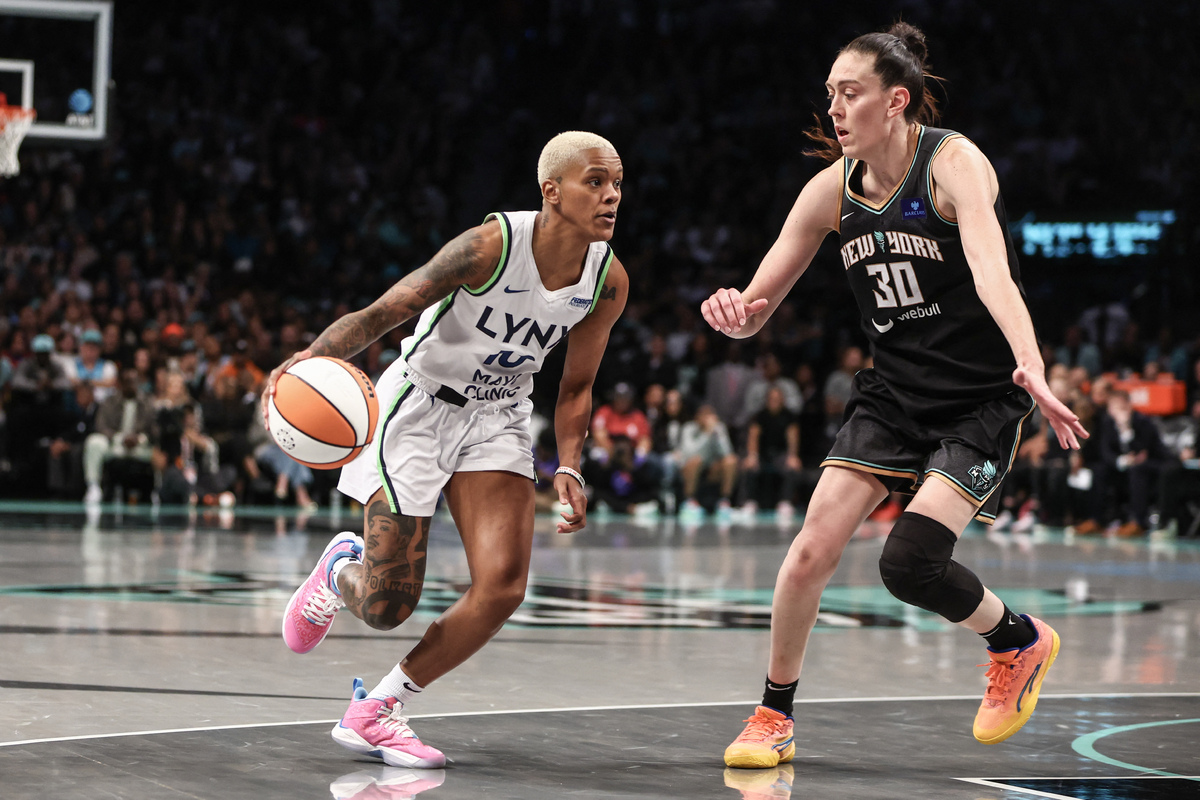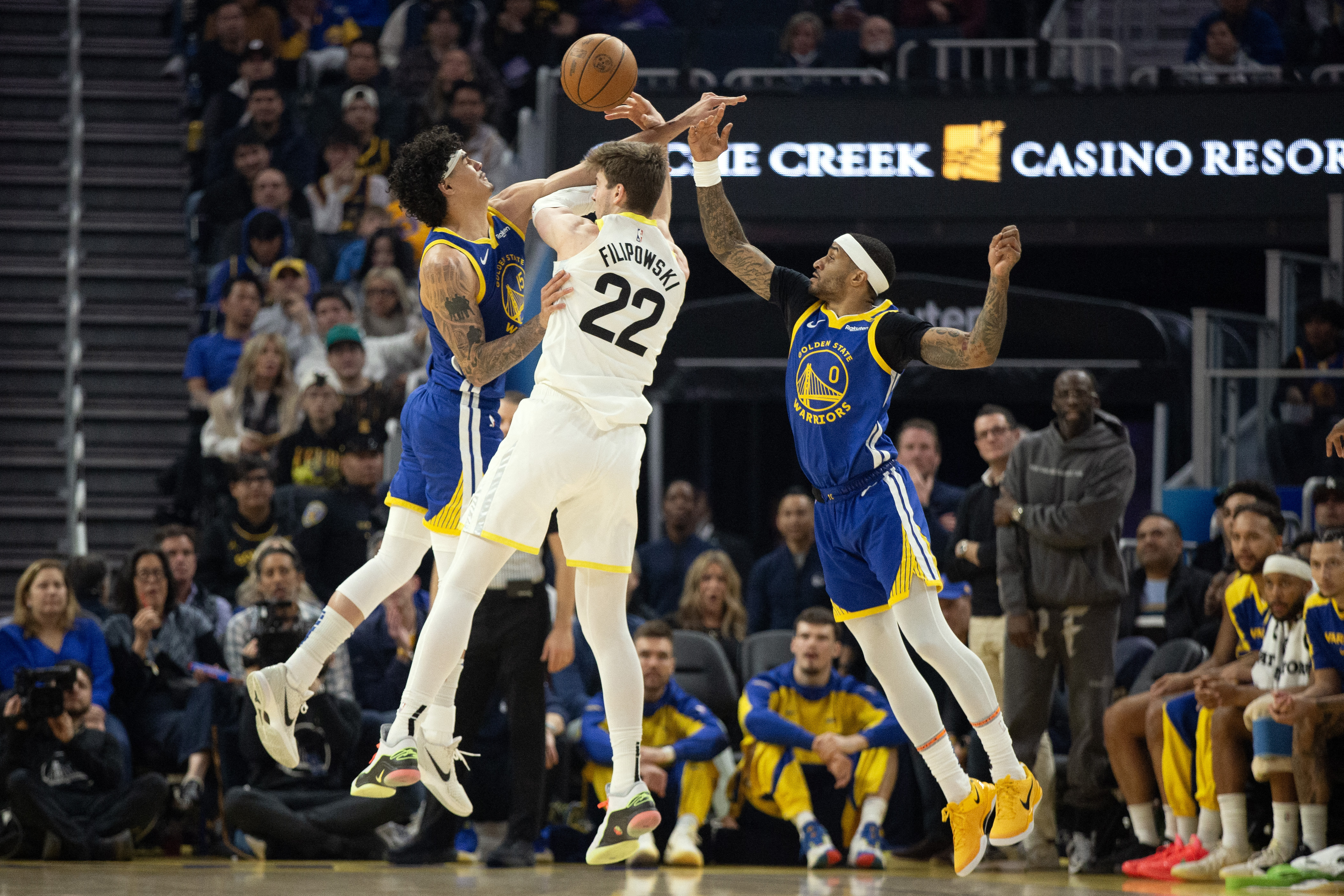You are viewing 1 of your 1 free articles
Little Leaguer’s Shoulder
Juvenile athletes are particularly susceptible to growth plate-related injuries, especially when subjected to high training and competition loads. Babette Pluim and Femke Claessen unpack Little Leaguer’s Shoulder and provide pragmatic clinical guidelines.
Cuba’s national youth baseball pitcher Oscar Hernandez warms up before a friendly game against Japan at the Latinoamericano stadium in Havana, Cuba.
Youth participation in baseball and other overhead sports continues to rise worldwide. With this growth comes an increasing incidence (~8% per year) of Little Leaguer’s Shoulder, also known as proximal humeral epiphysiolysis — an overuse injury of the proximal humeral physis in skeletally immature athletes(1). Little Leaguer’s Shoulder most commonly affects baseball pitchers aged 11–16 years, but any youth athlete engaged in repetitive overhead activity may be at risk, such as tennis, badminton, and cricket(1,2,3).
Although usually self-limiting, mismanagement risks recurrence, chronic pain, and, in rare cases, growth plate complications. For physiotherapists and sports clinicians, a thorough understanding of the biomechanics, risk factors, and evidence-based management of Little Leaguer’s Shoulder is crucial.
Pathophysiology and Epidemiology
The proximal humeral physis accounts for 80% of humeral growth and remains open until 16–21 years of age(4). Repetitive overhead motions, such as throwing (baseball) or serving (tennis), place rotational torque across this vulnerable growth plate, resulting in microtrauma and progressive physeal widening(4,5).
Approximately 5% of youth baseball players develop radiographic evidence of Little Leaguer’s Shoulder(6). Risk factors include year-round play, single-sport specialization, early introduction of breaking pitches, glenohumeral internal rotation deficit (GIRD), and excessive pitch/serve counts (see table 1)(1,7).
Table 1: Risk factors for Little League’s Shoulder and clinical correlates
| Risk factor | Clinical sign | Preventative strategy |
| Year-round baseball | Fatigue, chronic pain | Off-season rest |
| Single-sport specialization | Limited variability in motion | Encourage multi-sport |
| Early curveball use | Higher torque on physis | Delay until post-puberty |
| GIRD | Reduced internal rotation | Stretching, manual therapy |
| High pitch/serve counts | Overuse strain | Follow pitch/serve limits |
Athletes complain of a gradual onset of lateral shoulder pain with throwing or serving, often without a discrete injury event. They may also report fatigue, weakness, or referred elbow pain(1,4). Clinicians should keep Little Leaguer’s Shoulder in the differential diagnosis for adolescent athletes presenting with shoulder pain, alongside rotator cuff and bursal pathology.
Beyond Baseball — Other Sports at Risk
- Cricket: Case reports confirm Little Leaguer’s Shoulder in fast bowlers; the whip-like delivery produces stresses similar to pitching(3).
- Tennis: MRI studies in elite adolescents show growth plate changes and early rotator cuff pathology, even in asymptomatic athletes(7).
- Badminton: A case report describes an elite junior player with a proximal humeral epiphyseal stress fracture following intensive training, highlighting the risk of overuse in racket sports(2).
Diagnosis
Clinical assessment remains central. Localized tenderness over the proximal humerus and pain with resisted rotation are common findings(4). Radiographs typically reveal widening of the proximal humeral physis (Salter-Harris type I) in the dominant arm. While clinicians increasingly use MRI to confirm diagnoses and identify coexisting pathology, such as labral or rotator cuff changes (8,9). However, asymptomatic MRI abnormalities are common in youth throwers and overhead athletes, emphasizing the need to interpret imaging in the context of the clinical presentation(7,9).
Clinical Red Flags
- Persistent pain despite three months’ rest.
- Premature growth plate closure on imaging.
- Mechanical symptoms (clicking, instability) suggesting co-pathology.
“More than 90% of athletes achieve full recovery, and complications are uncommon.”
Management
Little Leaguer’s Shoulder is best managed nonoperatively:
- Rest: Cessation of throwing or serving for ~three months(3-5).
- Physiotherapy: Clinicians should address GIRD, strengthen rotator cuff and scapular stabilizers, and correct kinetic chain deficits.
- Return to throwing: Athletes must only begin throwing when pain-free with full strength and range of motion. Repeat imaging is unnecessary, as radiographic recovery lags behind clinical improvement(10). Importantly, clinicians must create structured, graded programs to reduce the risk of recurrence(4).
- Return to serving: Similar to throwing, athletes must progress gradually. They can start with slice serves (~10 reps at ~70% RPE), then move to flat, and finally kick serves, increasing volume and intensity stepwise(6).
- Outcomes: Most athletes return to full sport within four to six months. Recurrence occurs in 7–19% of cases, particularly in those with persistent GIRD(1,4).
Long-term Prognosis
More than 90% of athletes achieve full recovery, and complications are uncommon. However, in rare cases, complications include premature physeal closure and chronic shoulder pain(4). These risks underscore the importance of early recognition, adequate rest, and adherence to throwing guidelines.
Prevention
The most effective strategy is prevention:
- Follow age-based pitch counts and mandated rest days (see table 2).
- Ensure at least one seasonal break from throwing each year(6).
- Identify and correct GIRD early.
- Promote multi-sport participation to reduce repetitive stress(7).
- Encourage close collaboration between clinicians, physiotherapists, coaches, and parents.
Practical Prevention Tips
- Track pitch/serve/bowling counts across all teams.
- Teach sound throwing and serving mechanics early, with emphasis on kinetic chain efficiency.
- Delay breaking pitches (curveballs, sliders) and limit kick serves until skeletal maturity.
- Screen annually for deficits in range of motion and eccentric strength.
Table 2: USA Baseball pitch count recommendations (ages 7–16)
| Age | Maximum pitches per game | Days of rest (based on pitches) |
| 7-8 | 50 | One day: 20–35; Two days: 36–50 |
| 9-10 | 75 | One day: 21–35; Two days: 36–50; Three days: 51–65; Four days: 66+ |
| 11-12 | 85 | Same as above |
| 13-16 | 95 | Same as above |
- Cocking phases → maximum rotational torque (primary risk for Little Leaguer’s Shoulder).
- Acceleration phase → distraction forces stress the growth plate.
- Follow-through → eccentric load on rotator cuff.
Practical Takeaways for Clinicians
- Maintain a high index of suspicion for Little Leaguer’s Shoulder in 11–16-year-old overhead athletes (baseball, cricket, tennis, badminton) with lateral shoulder pain.
- Use imaging judiciously – always interpret radiographic or MRI findings in conjunction with clinical symptoms.
- Prioritize rest and structured rehabilitation; surgery is rarely indicated.
- Monitor closely for recurrence, particularly in athletes with GIRD or high throwing/serving/bowling loads.
- Integrate prevention strategies into routine training and coaching to minimize overuse stress.
References
- Am J Sports Med. 2016;44(6):1431.
- Boyd KT, Batt ME. Br J Sports Med.1997;31:252-253
- Br J Sports Med. 2004;38(4):e14.
- Orthop J Sports Med. 2021 Jul;9(7):23259671211017563
- StatPearls [Internet]. Treasure Island (FL): StatPearls Publishing; 2025 Jan. 1
- J Med Invest. 2015;62 (3-4):123-5.
- Ghent University, PhD Thesis. 2017. The Shoulder in the Elite Adolescent Tennis Player.
- Orthop J Sports Med. 2018 Feb;6(2):2325967118756825.
- J Am Osteopath Assoc. 2015 Aug;115(8):522.
- Am J Sports Med. 1998;26(4):575-80.
Newsletter Sign Up
Subscriber Testimonials
Dr. Alexandra Fandetti-Robin, Back & Body Chiropractic
Elspeth Cowell MSCh DpodM SRCh HCPC reg
William Hunter, Nuffield Health
Newsletter Sign Up
Coaches Testimonials
Dr. Alexandra Fandetti-Robin, Back & Body Chiropractic
Elspeth Cowell MSCh DpodM SRCh HCPC reg
William Hunter, Nuffield Health
Be at the leading edge of sports injury management
Our international team of qualified experts (see above) spend hours poring over scores of technical journals and medical papers that even the most interested professionals don't have time to read.
For 17 years, we've helped hard-working physiotherapists and sports professionals like you, overwhelmed by the vast amount of new research, bring science to their treatment. Sports Injury Bulletin is the ideal resource for practitioners too busy to cull through all the monthly journals to find meaningful and applicable studies.
*includes 3 coaching manuals
Get Inspired
All the latest techniques and approaches
Sports Injury Bulletin brings together a worldwide panel of experts – including physiotherapists, doctors, researchers and sports scientists. Together we deliver everything you need to help your clients avoid – or recover as quickly as possible from – injuries.
We strip away the scientific jargon and deliver you easy-to-follow training exercises, nutrition tips, psychological strategies and recovery programmes and exercises in plain English.
